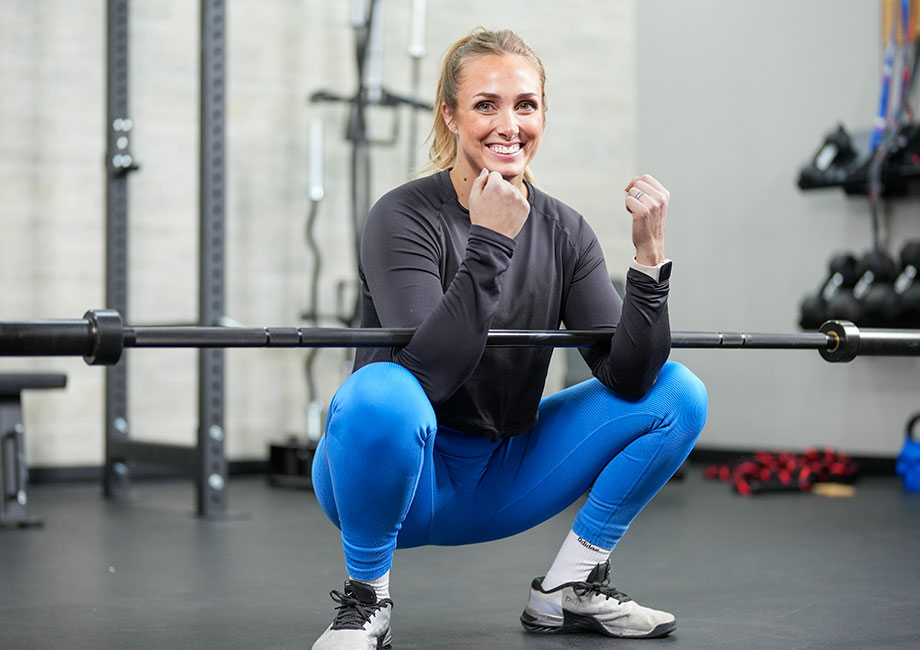We test and review fitness products based on an independent, multi-point methodology. If you use our links to purchase something, we may earn a commission. Read our disclosures.
The Zercher Squat sounds like some sort of medieval torture exercise for your legs, and in some aspects, it is. Depending on your preferences, this front-loaded quad exercise could be one of the most uncomfortable squat variations in the extended squat universe. They have been around since the ’30s and come courtesy of St. Louis strongman Ed Zercher, who, according to training lore, didn’t have a squat rack available to him on leg day. So, to perform his squats, he’d deadlift the barbell from the floor and wedge it into the crooks of his elbows, and the Zercher squat was born.
RELATED: What Muscles Do Squats Work?
Doesn’t that sound like a fun challenge? I’ve been a personal trainer for many years and have learned to embrace the burn, so I’ll go into everything Zercher squat so you can do this difficult exercise correctly.
How to Do the Zercher Squat
Muscle groups worked: Quads, hamstring, glutes, adductors, core, rhomboids, middle traps, lats, and biceps (isometrically).
How to do it:
- Set up your barbell on J hooks in the power rack at hip height, squat down, and place the barbell in the crooks of your elbows.
- Stand up and clasp your hands together for extra strength and stability.
- Get into a wider-than-shoulder-width stance and squat while keeping an upright torso and knuckles facing up toward the ceiling.
- Once you’ve reached your preferred squat depth, push through the floor and drive up with control.
- Reset and repeat, keeping your upper back tight and torso upright.
RELATED: Best Olympic Barbells
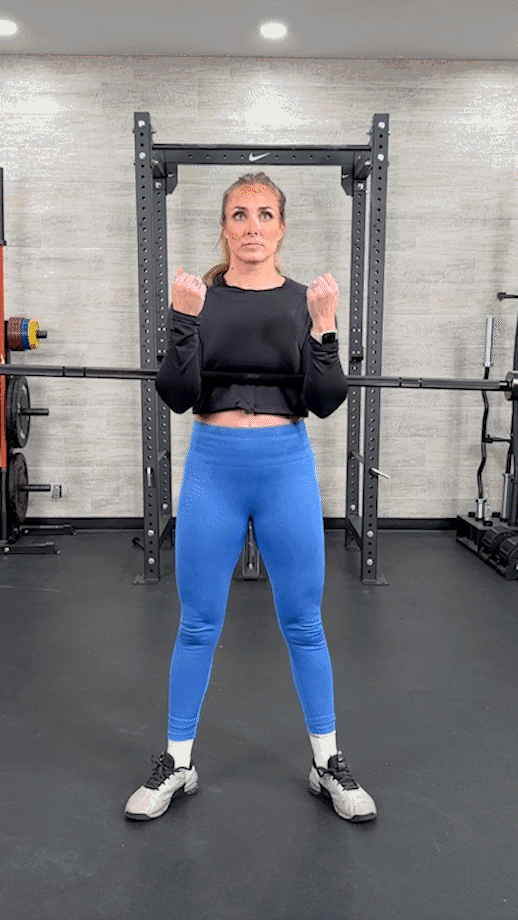
Form Tips from a Personal Trainer
When you’re a beginner to the Zercher Squat, you may be put off by how foreign the front-loaded position feels against your elbows and how it lights up your anterior core and upper back. Here are my tips for proper form to get the best out of this unique exercise.
Pay Attention to Your Set Up
There’s no need to set up like Ed Zercher once upon a time and deadlift the barbell from the floor. I recommend setting the barbell at hip height, squatting down, and placing the barbell securely between your elbows.
RELATED: Ultimate Squat Rack Guide
Hold Your Hands Together
I recommend you grip your hands together to keep the barbell in place because it can offer you a little more stability and allow you to focus on maintaining proper form. That said, clasping your hands is not necessary for performing this movement.
Watch Your Feet
Due to the wide elbow position, you must widen your stance to get your elbows between them to hit the appropriate depth. It’s best to start with a wider stance than you think and adjust from there.
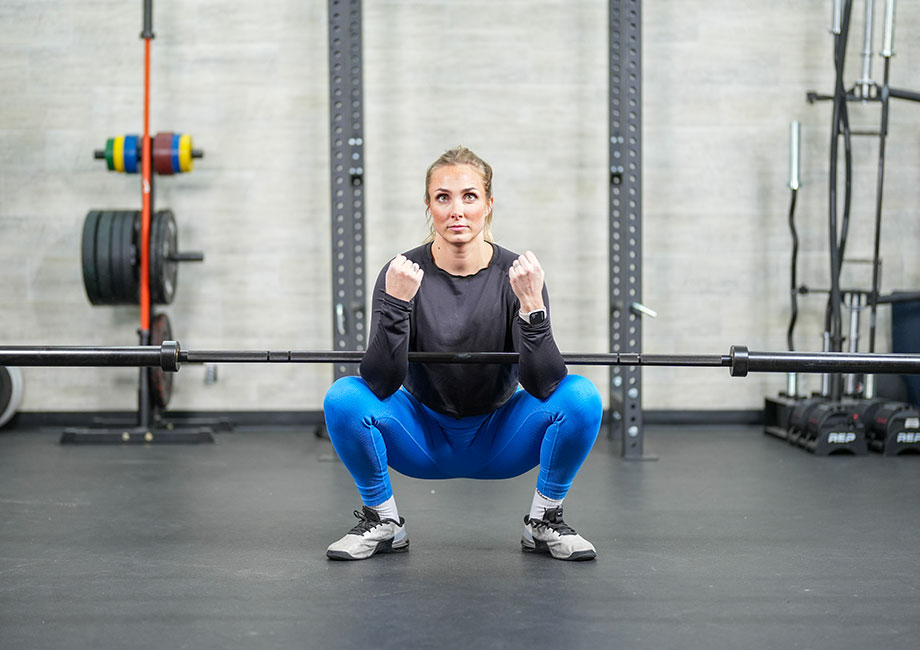
Get Tight
With the Zercher squat, the load is anterior; therefore, you might feel tempted to lean (or be pulled) forward. To combat this, position your shoulders down and back while keeping your upper back tight to maintain a neutral spine and avoid tipping.
Make It More Comfortable
It’s not easy to hold the barbell in the crease of your elbows, but adding a squat pad or wrapping a towel around it will make it slightly more bearable.
Zercher Squat Benefits
The Zercher squat can be challenging, without a doubt, but there are a few benefits of this exercise.
Improved Upper Back and Core Strength
Many exercises indirectly train upper back and core strength and endurance to keep you in good posture and your spine neutral. But with anteriorly loaded squats like goblet, front, and the Zercher squat, the weight pulls you forward, so the upper back and anterior core contract isometrically to counteract that. When they do their job well, it allows the quads and glutes to be the prime movers of the Zercher Squat.
Lower Back Saver
The Zercher squat is front-loaded and closer to your center of gravity (or COG), meaning there’s less compressive load on your spine than the back squat or deadlift, for example. Why? The load of a barbell back squat is placed upon your spine and further away from your COG, same with the deadlift, but in the opposite direction. Both factors load the lower back, but this compressive load isn’t as hard on your lower back because it can help build strength by coordinating your core muscles for balance and reinforcing your posture. That said, if you still find that discomfort exists, it’s always better to find another alternative.
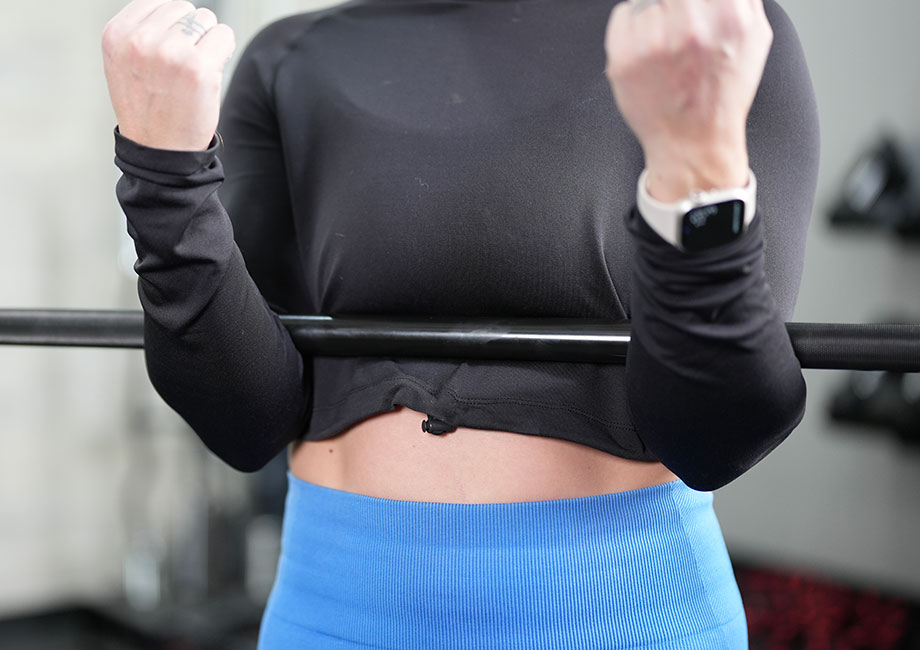
RELATED: Lower Back Exercises
Become a Quad God
Being upright and digging deeper into the squat brings higher degrees of knee flexion and improved quad engagement for more quad strength and hypertrophy potential.
Who Should Do the Zercher Squat?
I’d say anyone who has a screw loose. I’m just kidding, well, kind of. It’s not a favorite of mine, but that doesn’t mean it won’t become your new go-to quad-builder. Here’s a list of lifters that can benefit from incorporating this exercise into their workout program.
Strength, Powerlifting, and Strongman Athletes
The Zercher squat barbell position builds quad, core, and upper back strength and muscle. Strength athletes need strength and muscle mass to perform at a high level in the gym. Powerlifters benefit from using it as an accessory exercise because it trains core and upper back strength. Strongman athletes benefit from the loading position because it mimics the loading positions common in strongman events.
RELATED: Powerlifting Workout
Olympic Weightlifters
While the front squat has a better carryover for Olympic lifters, some may enjoy Zercher squats as a change of pace to build core and upper back strength and improve their lifting positions for their core movements.
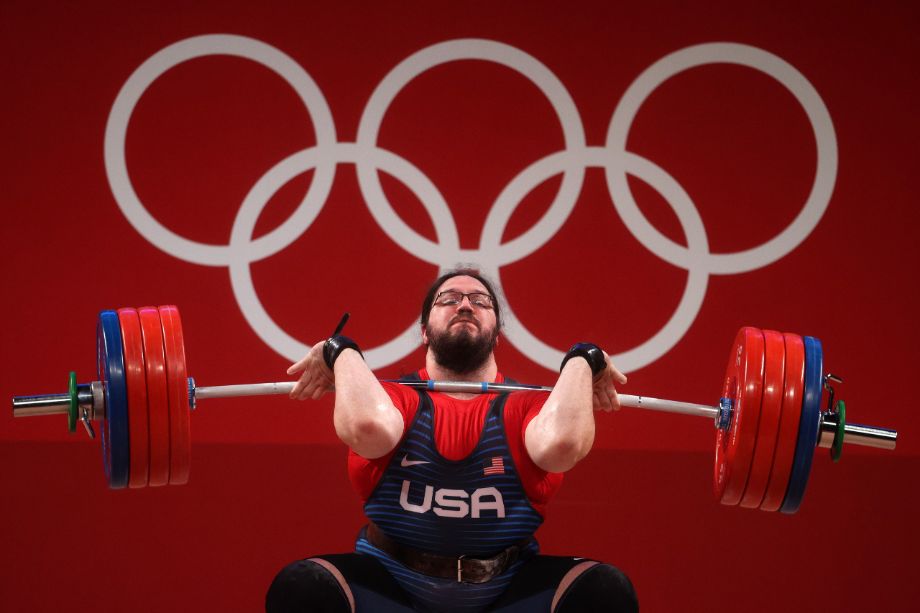
When asked if he ever uses Zercher squats during his weightlifting training sessions, GGR staff writer Caine Wilkes, OLY, USAW-L1, says, “I have used Zercher squats and holds in my training before. Routinely, my problem area in my clean has been my upper back, which isn’t as relatively strong as my legs. On heavy lifts, when I receive the barbell in a front squat, my upper back can sometimes fold, making me lose the weight out in front. Zercher-grip exercises put much of the workload on the upper back muscles, which helps carry over to having a much stronger front squat and receiving position in the clean.”
General Population Lifters
Most can perform the Zercher squat to improve their upper back strength and core stability, and it puts more focus on the quadriceps when performed with proper form. Zercher squats will likely benefit most lifters because the way they’re loaded is highly functional and has a direct carryover to the gym and daily activities.
How to Program the Zercher Squat
Use Zercher squats as an alternative to your regular squat protocol for a change of pace or if your lower back is bothering you. Also, perform them at the beginning of your strength-training workout when you have the most energy in the tank. Beginners should start with about 50 to 70% of their usual squat load; otherwise, load up and enjoy the benefits of this demanding exercise.
For More Muscle and Bodybuilding
Recent research has the loading recommendation for muscle hypertrophy at 8 to 12 reps1. If you find that you’re not gassing out by the 12-rep mark, that typically means you need to increase your weight.
RELATED: Full-Body Barbell Workout
For Improved Strength
Once you have the form down, it’s time to build some serious strength and grit. Performing three to six sets of one to five reps1 working with 70 to 80% of your front squat one-rep max (1RM) will give you all you can handle.
Common Zercher Squat Mistakes
Here are a few common mistakes to watch out for to get all the benefits of the Zercher squat.
Leaning Too Far Forward
Leaning too far forward stresses the lower back and turns this into good morning exercise, not a squat. Prevent this by lightening your load and tightening your core, biceps, and upper back.
Failing to Keep Your Elbows Up
If you find it uncomfortable to have a barbell resting against your elbows, there can be a tendency not to maintain the required tension in your biceps. This causes your elbows to drop forward, causing the mistake mentioned above. Start light and build strength before loading up.
Lack of Upper Back Engagement
Not keeping your upper back engaged makes you more prone to leaning forward and raising at the hips too early in the lift. Keeping the upper back tight encourages a neutral spine, leading to better technique and a safer squat.
Zercher Squat Alternatives
The Zercher squat won’t be for all lifters, but that doesn’t mean you should avoid the anterior loaded position altogether. Here are some alternatives to the Zercher squat to reap the benefits without the awkwardness.
Front Barbell Squat
Why do it: The front barbell squat is the got-to front-loaded squat form. A vertical upper body position makes this squat variation easier on the lower back as the spine has less compressive force due to the anterior loaded position.
How to do it:
- Use an overhand grip to place the barbell in the proper front rack position high up onto your shoulders.
- Stand up straight, keeping your shoulders down and chest up, and take three steps back from the rack.
- Squat between your knees, keeping your back neutral while minimizing the forward lean of your upper body.
- Once you have reached your depth, push through your feet and return to the starting position.
- Reset and repeat for desired repetitions.
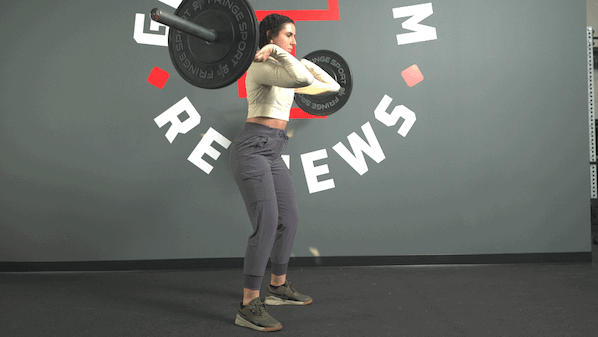
Double Kettlebell Front Squat
Why do it: The front-racked position engages your anterior core and upper back, similar to the Zercher squat but without the elbow load.
How to do it:
- Clean a pair of kettlebells to the front-racked position with your shoulders down, chest up, and wrists neutral.
- Get your feet shoulder-width apart and squat between your knees.
- Once you have reached your preferred depth, lift back up and finish by squeezing your glutes.
- Reset and repeat for desired reps.
RELATED: Kettlebell Clean
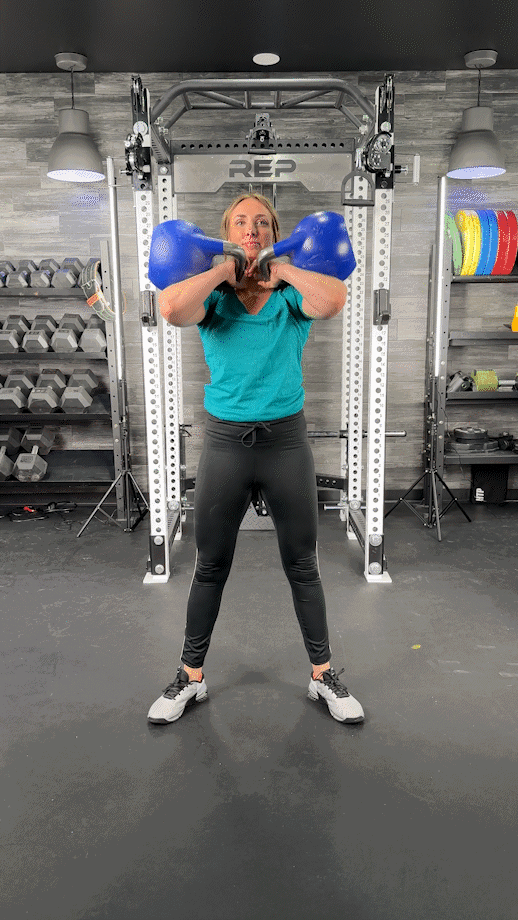
Sandbag Squat
Why do it: The sandbag squat uses less load but elicits a similar training effect because of the increased stabilization needed to keep the bag in place while you squat.
How to do it:
- Hold the sandbag in a bear hug in front of you.
- Get your feet in your preferred squat stance with your shoulders down and chest up.
- Squat between your knees to your preferred depth, then lift back up and return to the starting position.
- Reset and repeat for desired reps.
Note: This is just one variation because there are several ways to hold the sandbag when performing this movement.
RELATED: Best Sandbag Workouts
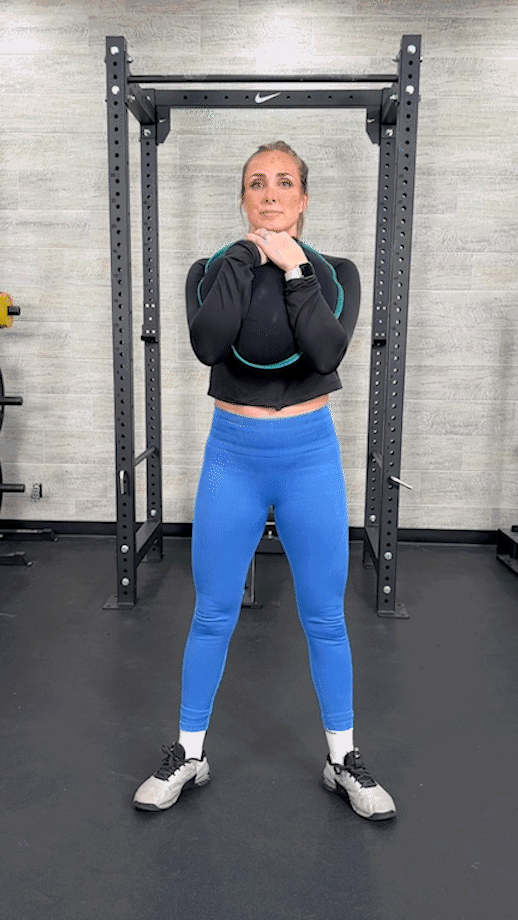
Zercher Carry
Why do it: If you want to build your upper back strength, improve your posture, and generate serious mental and physical toughness, this exercise will do all that and more.
How to do it:
- Set up the barbell at hip height, squat down, and place the barbell in the crooks of your elbows, facing the direction you are walking.
- Squat up with your shoulders down and elbows up, walk slowly for half the distance, and carefully turn around.
- Walk back to the squat rack, squat down, and place the barbell back on the rack.
- Reset and repeat for desired reps.
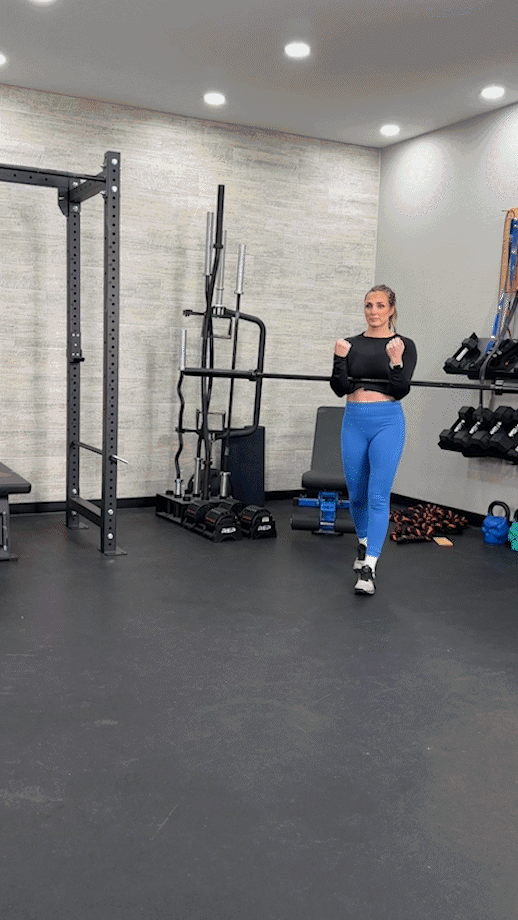
Goblet Squat
Why do it: The Goblet squat is an excellent exercise for those new to the anterior loaded position because the dumbbell or kettlebell allows you to get into a good squat position more easily.
How to do it:
- Hold a dumbbell (or kettlebell) in the goblet position by your chest and under your chin.
- Then, place your feet approximately shoulder-width apart with your shoulders down and chest up.
- Squat between your knees to your preferred depth and then return to the starting position.
- Reset and repeat for desired reps.
RELATED: Best Kettlebells
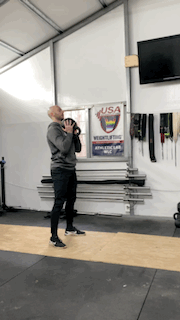
Zercher Squat: FAQs
What is the Zercher squat good for?
The Zercher squat is excellent for building your upper back and core strength while adding size to your quads.
What are the disadvantages of Zercher squats?
As many benefits as the Zercher squat has, there are drawbacks. Getting the barbell in position is challenging, and it is difficult and somewhat painful to hold a heavy-loaded barbell using the inside of your elbows.
Are Zercher squats better than back squats?
There are no better or worse exercises, just ones that better fit you and your goals. Back squats are better if your goal is strength and muscle and you have the required shoulder mobility. If you want to build mental fortitude along with your quads, then hello, Zercher squat.
RELATED: Squat Workout
Is a Zercher squat easier than a front squat?
Both are challenging exercises because of their anterior-loaded position. You’ll be able to use more load with the front squat, but the difficulty of holding a barbell using your elbows may give Zercher squats the edge in terms of difficulty. In my opinion, the front squat is a slightly easier squat variation.
References
Schoenfeld BJ, Grgic J, Van Every DW, Plotkin DL. Loading Recommendations for Muscle Strength, Hypertrophy, and Local Endurance: A Re-Examination of the Repetition Continuum. Sports (Basel). 2021 Feb 22;9(2):32. doi: 10.3390/sports9020032. PMID: 33671664; PMCID: PMC7927075.
Further reading

The Zercher squat will take your mental toughness and quad strength to a new level, and here are my trainer tips on how to do it. Read more

The Grizzly Wide is exactly like it sounds—roomy and wide. See our complete thoughts on this affordable, oversized tub in our Desert Cold Plunge Tub review. Read more

Do you have tight hip flexors? These hip flexor stretches get you feelin’ right when your flexors are tight! Check them out right here! Read more

The Zercher Squat sounds like some sort of medieval torture exercise for your legs, and in some aspects, it is. Depending on your preferences, this front-loaded quad exercise could be one of the most uncomfortable squat variations in the extended squat universe. They have been around since the ’30s and come courtesy of St. Louis strongman Ed Zercher, who, according to training lore, didn’t have a squat rack available to him on leg day. » Read more about: Conquer the Zercher Squat For Improved Lower Body Gains » Read more

